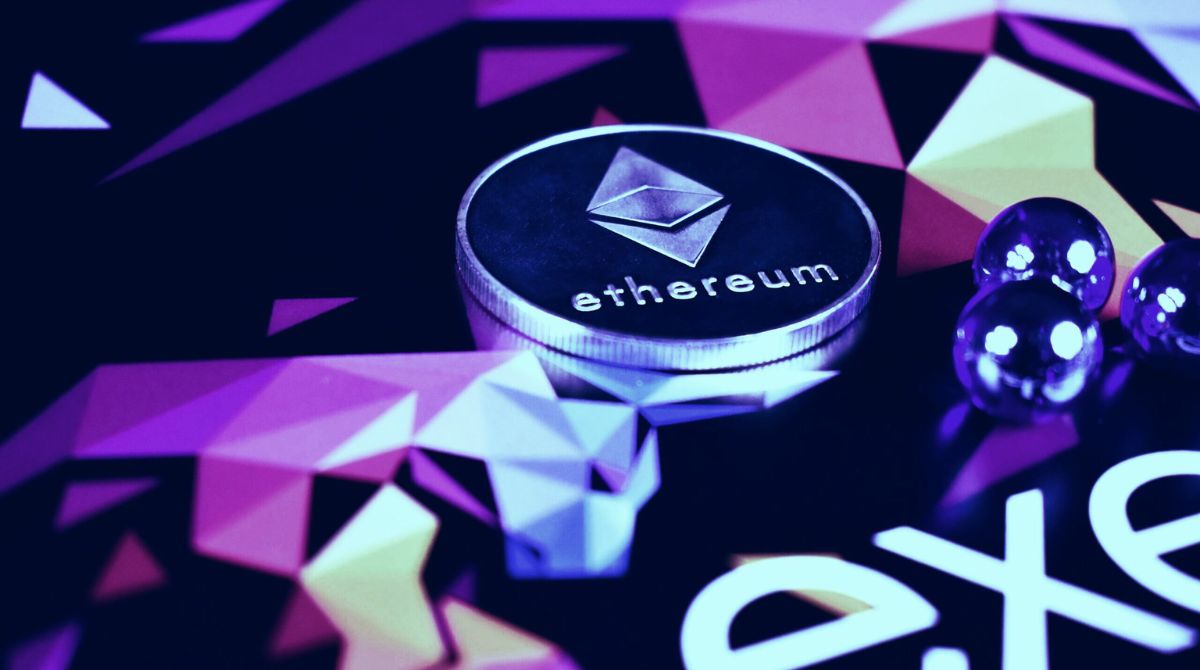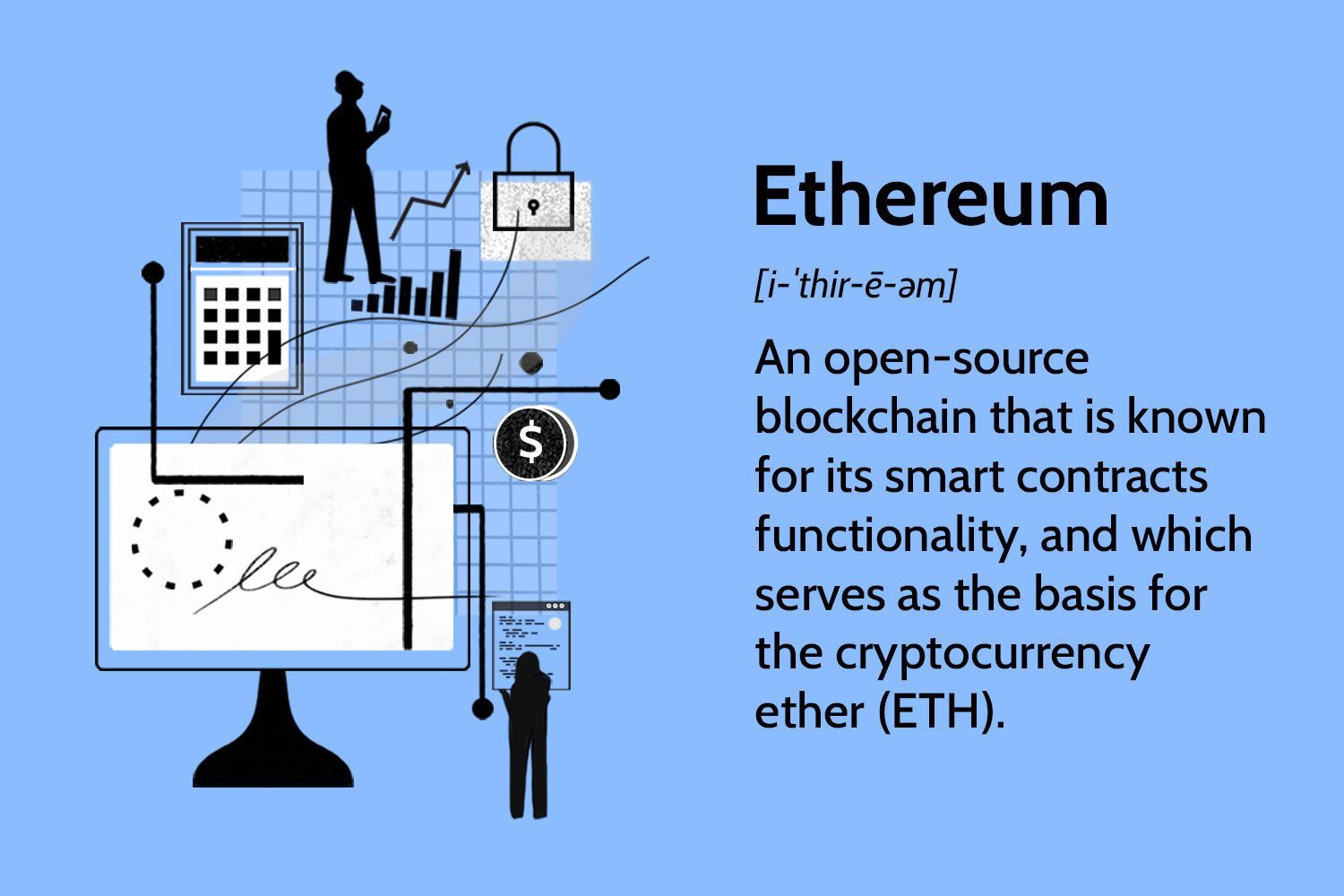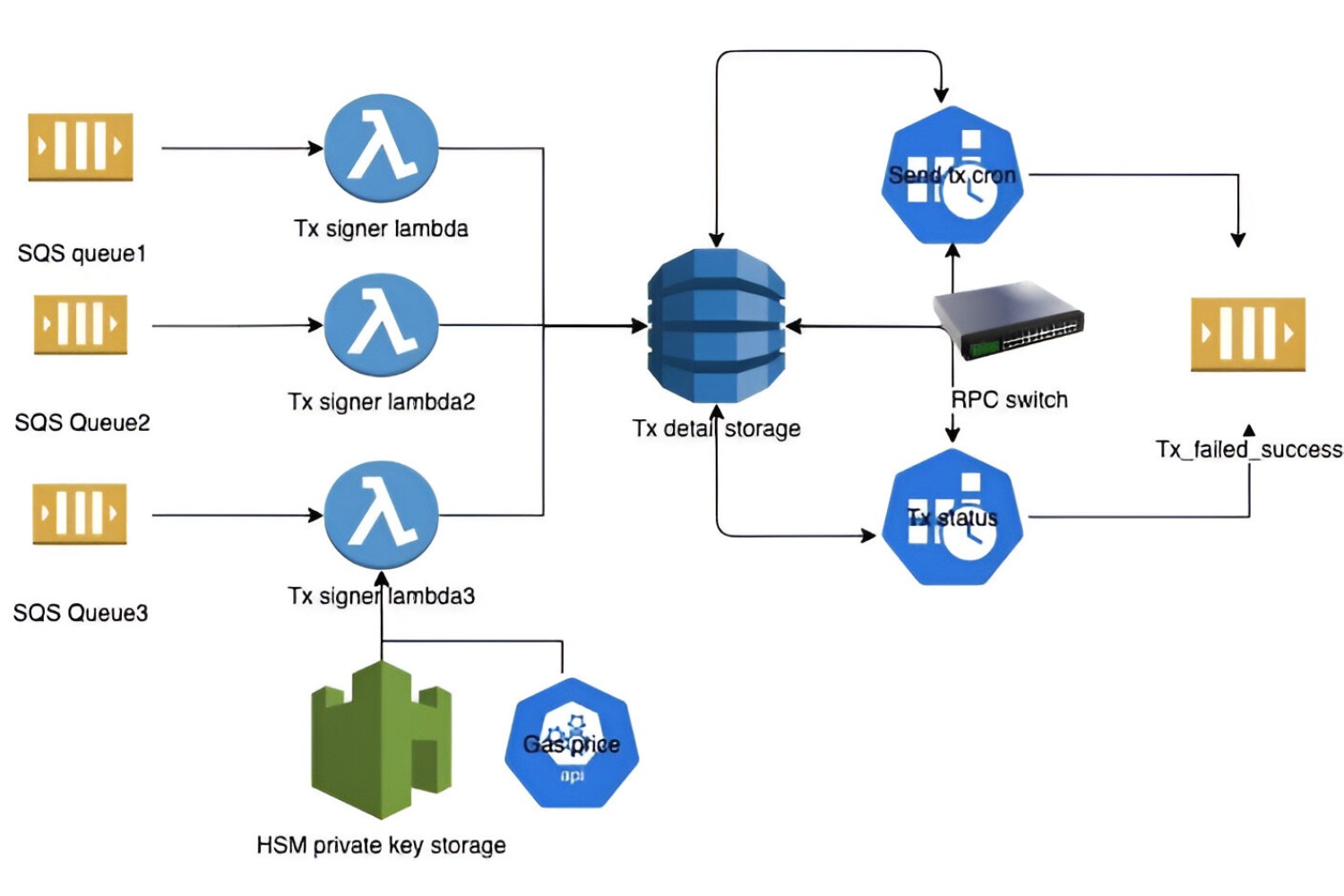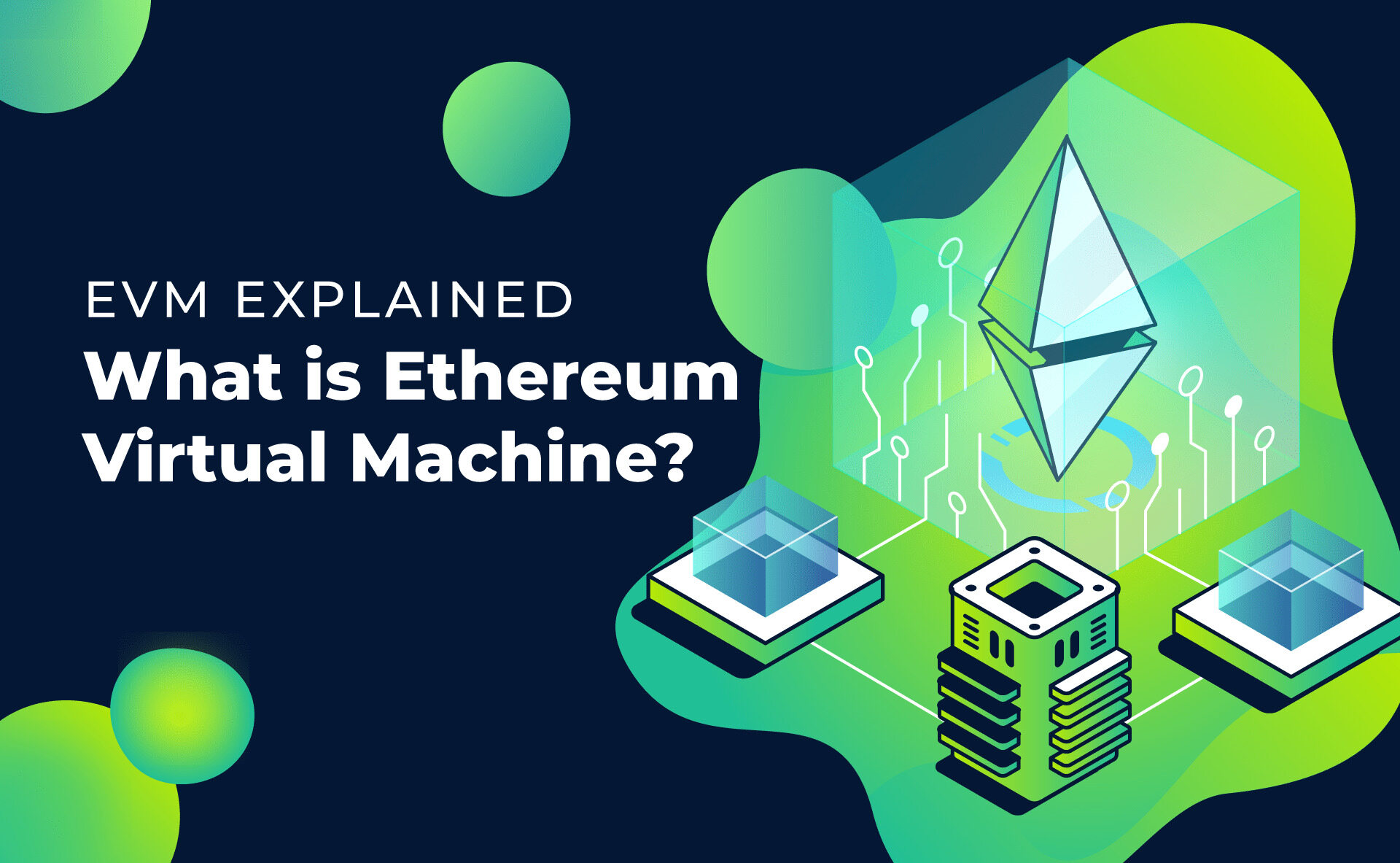Introduction
Welcome to the exciting world of smart contracts on the Ethereum blockchain! In this article, we will explore how smart contracts work on the Ethereum network and discover the underlying technology that powers them. Whether you are a cryptocurrency enthusiast, a developer, or just curious about this innovative technology, we will provide you with a comprehensive overview that will demystify the concept of smart contracts.
Smart contracts have gained significant attention in recent years due to their potential to revolutionize various industries and streamline complex processes. These self-executing contracts not only automate tasks but also ensure transparency, security, and efficiency. Understanding how smart contracts function on the Ethereum blockchain is paramount in comprehending the power of this disruptive technology.
Before diving into the intricacies of smart contracts, it is important to familiarize ourselves with Ethereum, the decentralized platform that enables their existence. Ethereum, often referred to as the world’s computer, is a blockchain-based platform that enables developers to build and deploy decentralized applications (DApps). It differs from Bitcoin, the first and most well-known cryptocurrency, in its ability to support the creation of smart contracts.
Utilizing the Ethereum blockchain, developers can create programmable contracts with predefined conditions and actions, which are autonomously executed. These smart contracts are written in a computer language called Solidity and are stored on the Ethereum network, ensuring immutability and transparency.
One of the fundamental aspects of the Ethereum platform is the native cryptocurrency known as Ether (ETH). Ether not only serves as a digital currency but also plays a crucial role in the execution of smart contracts. It acts as the fuel for the Ethereum network, incentivizing miners to validate transactions and execute smart contracts on behalf of users.
At the heart of the Ethereum network lies the Ethereum Virtual Machine (EVM), a decentralized, Turing-complete virtual machine that executes smart contracts. The EVM is responsible for processing and validating transactions, ensuring the integrity of the blockchain, and executing the code written in the smart contracts.
In the next sections, we will delve deeper into how smart contracts are created, executed, and secured on the Ethereum network. We will also explore the concept of gas, which determines the cost of executing smart contracts, and take a closer look at some real-world use cases for smart contracts.
What are Smart Contracts?
Smart contracts are self-executing contracts that contain the terms and conditions of an agreement between parties. These contracts are coded in a programming language and are stored on a blockchain, such as Ethereum. Unlike traditional contracts that require intermediaries or third parties to enforce and oversee the agreement, smart contracts operate autonomously.
Smart contracts were first proposed by Nick Szabo in 1996, who envisioned a digital protocol that would enable the execution of contracts without relying on trust or intermediaries. With the advent of blockchain technology, this vision became a reality.
At their core, smart contracts are programmable actions that are triggered when certain predefined conditions are met. They are written in programming languages specifically designed for smart contract development, such as Solidity for Ethereum. The code specifies the rules, obligations, and consequences of the contract, as well as the actions to be executed automatically.
Smart contracts offer several advantages over traditional contracts. One of the key benefits is their trustworthiness and transparency. Since smart contracts are stored on a blockchain, they cannot be altered or tampered with, ensuring that the agreed-upon terms are upheld. Additionally, all parties involved can access and verify the contract’s contents, eliminating the need for intermediaries to oversee the agreement.
Another significant advantage is the automation that smart contracts provide. Once deployed on the blockchain, they can autonomously execute actions based on the predefined conditions. This eliminates the need for manual intervention and streamlines processes, saving time and reducing the risk of human error.
Smart contracts also offer enhanced security. Traditional contracts may be susceptible to fraud or manipulation, as they rely on trust in the involved parties or intermediaries. Smart contracts, on the other hand, are executed on a decentralized network, making them highly resistant to hacking or malicious tampering.
Furthermore, smart contracts enable cost savings by eliminating the need for intermediaries or third parties. These intermediaries often charge fees for their services, increasing the overall costs of contract execution. Smart contracts streamline the process and reduce the need for intermediaries, resulting in lower transaction costs.
To summarize, smart contracts are self-executing digital contracts that automate the execution of predefined actions based on specific conditions. They are stored on a blockchain and offer transparency, automation, security, and cost savings compared to traditional contracts. In the following sections, we will explore the inner workings of smart contracts on the Ethereum blockchain and how they are created and executed.
The Basics of Ethereum
Ethereum is a decentralized blockchain platform that enables the creation and execution of smart contracts, as well as the development of decentralized applications (DApps). It was proposed by Vitalik Buterin in 2013 and launched in 2015 with the goal of enabling developers to build and deploy decentralized applications on a global scale.
Unlike traditional centralized systems, where data and control are held by a single entity, Ethereum operates on a decentralized network of computers called nodes. These nodes work collectively to maintain the integrity and security of the blockchain, ensuring that all transactions and smart contract executions are valid and accurate.
The Ethereum blockchain is a public ledger that records all transactions and smart contracts. It serves as an immutable and transparent record of all activities on the network. Every transaction and smart contract execution is stored in a block, which is then added to the chain, forming a chronological history of events.
One of the key features of Ethereum is its ability to support the creation of smart contracts through its built-in programming language called Solidity. Solidity allows developers to define the rules and logic of their contracts, specifying the conditions and actions to be executed automatically. This language is specifically designed for smart contract development and is widely used in the Ethereum ecosystem.
Another important aspect of Ethereum is its virtual currency called Ether (ETH). Ether serves multiple purposes within the Ethereum ecosystem. Firstly, it acts as a medium of exchange used to pay for transaction fees and the execution of smart contracts. Every action on the Ethereum network, including sending Ether or executing code, requires a certain amount of Ether as a fee.
Secondly, Ether is a store of value and a speculative asset. It can be bought, sold, and traded on various cryptocurrency exchanges. Its value fluctuates based on market demand and supply dynamics, similar to other cryptocurrencies like Bitcoin.
Moreover, Ether enables the functioning of decentralized applications on the Ethereum platform. DApp developers may require users to hold or spend Ether within their applications to access certain features or services.
In summary, Ethereum is a decentralized blockchain platform that supports the creation and execution of smart contracts and allows for the development of decentralized applications. It operates on a network of computers and utilizes Ether as its native cryptocurrency. Understanding the basics of Ethereum is essential to grasp the functionality and potential of smart contracts on this platform. In the next sections, we will explore the Ethereum Virtual Machine (EVM) and the process of creating and executing smart contracts in more detail.
The Role of Ether
Ether (ETH) is the native cryptocurrency of the Ethereum blockchain and plays a vital role in facilitating transactions and executing smart contracts. It serves as a digital currency within the Ethereum ecosystem and is used for various purposes, including paying for transaction fees, incentivizing network participants, and enabling the functioning of decentralized applications (DApps).
One of the primary functions of Ether is to pay for transaction fees on the Ethereum network. Every action, such as transferring Ether from one account to another or executing a smart contract, requires a certain amount of Ether as a fee. These fees, commonly known as gas fees, are determined by the complexity and computational resources required to execute the action.
The gas fees in Ethereum are denominated in Ether and are used to compensate the network participants who validate and process transactions. Miners, who maintain the network and validate transactions, receive these fees as rewards for their work. The gas fee also serves as a mechanism to prevent spam and abuse on the Ethereum network, as users have to pay a fee for their actions.
In addition to transaction fees, Ether acts as an incentive for miners to secure the Ethereum network. The process of mining involves solving complex mathematical puzzles to validate transactions and add them to the blockchain. Miners compete with one another to solve these puzzles, and the first miner to solve it successfully is rewarded with a certain amount of Ether. This mining reward incentivizes miners to allocate computational power and resources to maintain the security and integrity of the Ethereum network.
Furthermore, Ether plays a crucial role in enabling the functionality of decentralized applications (DApps) on the Ethereum platform. Developers of DApps may require users to hold or spend Ether within their applications to access certain features or services. This serves as a mechanism to align incentives and create economic models within the DApp ecosystem.
Ether is also widely traded and used as a speculative asset in the cryptocurrency market. Its value fluctuates based on market supply and demand dynamics, similar to other cryptocurrencies like Bitcoin. Traders and investors buy, sell, and hold Ether to take advantage of price movements and potential investment opportunities.
It is important to note that while Ether is the primary cryptocurrency used within the Ethereum ecosystem, it is separate from the concept of smart contracts themselves. Smart contracts are code-based agreements that operate on the Ethereum blockchain, whereas Ether is the digital currency that facilitates transactions and incentivizes network participants.
In summary, Ether (ETH) is the native cryptocurrency of the Ethereum blockchain and is used for transaction fees, incentivizing miners, enabling decentralized applications, and serving as a speculative asset. Understanding the role of Ether is crucial for comprehending the functioning and economic dynamics of the Ethereum network. In the next sections, we will explore the Ethereum Virtual Machine (EVM) and the process of creating and executing smart contracts.
Understanding the Ethereum Virtual Machine (EVM)
The Ethereum Virtual Machine (EVM) is a crucial component of the Ethereum blockchain that executes smart contracts and ensures the integrity of the network. It is a decentralized, Turing-complete virtual machine that runs on the computers (nodes) participating in the Ethereum network.
The EVM acts as a sandboxed execution environment for smart contracts written in languages like Solidity. It provides a runtime environment where smart contracts can be executed safely and securely without interference from external factors. Each node on the Ethereum network runs its own instance of the EVM to verify and execute transactions and smart contracts.
One of the key features of the EVM is its ability to execute smart contracts deterministically. This means that the same input will always produce the same output when executed on any EVM instance. Deterministic execution is crucial to ensure consistency and reliability across all nodes in the network.
The EVM uses a stack-based architecture, where instructions and data are stored and manipulated on a stack. It executes bytecode, a low-level representation of the smart contract code, which is generated from high-level programming languages like Solidity. The bytecode is deployed on the Ethereum network and serves as the executable code for the smart contract.
When a transaction invokes a smart contract, the EVM loads the bytecode of the contract and executes it step by step, following the instructions specified in the bytecode. It performs calculations, reads data from memory, and stores data in memory, all within the confines of the EVM sandbox. The EVM also manages gas consumption, ensuring that the execution stays within predefined limits.
The gas mechanism plays a crucial role in the EVM. Gas is a measure of computational effort required to execute a smart contract or transaction. Each operation in the EVM consumes a certain amount of gas, and the user initiating the transaction must provide enough ether to cover the gas cost. If the gas limit is exceeded during the execution, the transaction is reverted, and any changes made by the smart contract are undone.
The EVM enforces a set of rules and limits to ensure safe execution of smart contracts. These rules prevent infinite loops, excessive resource consumption, or malicious code from causing harm to the network. These security measures are built into the EVM to protect the integrity and reliability of the Ethereum blockchain.
By providing a standardized and secure execution environment, the EVM allows for interoperability across different smart contracts and DApps on the Ethereum platform. Developers can be confident that their smart contracts will behave predictably and consistently regardless of the specific node executing them.
In summary, the Ethereum Virtual Machine (EVM) is a decentralized, sandboxed execution environment that runs smart contracts on the Ethereum network. It ensures deterministic execution, manages gas consumption, and enforces security measures to protect the network. Understanding the EVM is essential for comprehending how smart contracts are executed and the underlying technology that enables their functionality in the Ethereum ecosystem. In the next sections, we will explore the process of creating and executing smart contracts on the Ethereum network.
How Smart Contracts are Created
Creating a smart contract involves several steps, from defining the contract’s logic to deploying it on the Ethereum blockchain. Let’s explore the process of creating smart contracts on the Ethereum network.
The first step in creating a smart contract is defining its logic and functionality. Developers typically write smart contracts using languages like Solidity, which is specifically designed for Ethereum smart contract development. Solidity provides features and constructs to define the contract’s variables, functions, and conditions.
Once the smart contract code is written, it needs to be compiled into bytecode, a low-level representation of the contract’s code that the Ethereum Virtual Machine (EVM) can understand. The bytecode is generated using a Solidity compiler, which typically outputs an executable file with a .sol extension.
After compiling the smart contract code, the next step is deploying it on the Ethereum network. This involves creating a transaction that includes the bytecode of the smart contract. The deployment transaction is sent to the Ethereum network and processed by the network’s miners.
When the deployment transaction is confirmed by the miners and included in a block, the smart contract is assigned a unique address on the Ethereum blockchain. This address acts as an identifier and allows users to interact with the smart contract by invoking its functions and accessing its state.
Once the smart contract is deployed, it becomes part of the permanent and decentralized record of the blockchain. Any updates or changes to the state of the smart contract will require additional transactions to be sent and processed by the network.
To interact with a deployed smart contract, users send transactions to the contract’s address, specifying the function to be executed and any required parameters. These transactions are processed by the miners, and the EVM executes the corresponding function in the smart contract based on the provided inputs.
Smart contracts can interact with other smart contracts and external entities using predefined interfaces and methods. They can read and write data to the blockchain, perform calculations, store and transfer digital assets, and execute complex logic.
It is important to note that smart contracts, once deployed, cannot be modified or updated directly. Any changes to the contract’s logic or state require deploying a new version of the contract and migrating data or assets to the new contract.
Developers often make use of development frameworks, such as Truffle or Remix, to streamline the process of creating and deploying smart contracts. These frameworks provide tools and utilities to compile, deploy, test, and interact with smart contracts, making the development process more efficient.
In summary, creating a smart contract involves defining its logic, compiling the code into bytecode, deploying it on the Ethereum network, and interacting with it using transactions. Solidity is commonly used to write smart contract code, and development frameworks provide additional tools to simplify the process. Understanding how smart contracts are created is crucial for building decentralized applications and harnessing the power of the Ethereum blockchain.
Executing Smart Contracts on the Ethereum Network
Once a smart contract is deployed on the Ethereum network, it can be executed by sending transactions that invoke the contract’s functions. Let’s explore the process of executing smart contracts on the Ethereum network.
When a user wants to interact with a smart contract, they create and send a transaction that specifies the contract’s address, the function to be executed, and any required parameters. The transaction is then broadcasted to the Ethereum network and awaits confirmation by the miners.
Miners on the Ethereum network validate the transaction and include it in a block. They execute the function specified in the transaction by running the bytecode of the smart contract on their local Ethereum Virtual Machine (EVM) instances. The EVM executes the instructions in the bytecode and updates the state of the smart contract accordingly.
Executing a smart contract function may involve reading or modifying the contract’s state. The state of a contract consists of its variables and data stored on the Ethereum blockchain. For example, a token contract may have a balance variable that stores the balance of each user. When a transaction invokes a function to transfer tokens, the contract’s state is updated to reflect the new balances of the users involved.
Once the execution is complete, the changes made to the state of the smart contract are recorded on the Ethereum blockchain. This ensures that the updated state is permanent and can be validated by any node on the network.
Gas is an integral part of executing smart contracts on the Ethereum network. Every operation in the EVM consumes a certain amount of gas, which acts as a measure of computational effort. Users need to provide enough Ether to cover the gas cost of the execution. If the gas limit specified in the transaction is reached before the execution completes, the transaction is reverted, and any changes made to the contract’s state are undone.
Gas costs are determined based on the complexity of the operation being executed. Simple operations consume less gas, while more complex operations require more gas. This incentivizes efficient coding practices and avoids unnecessary computations that could increase the cost of executing a smart contract.
Smart contracts can also emit events during execution, which serve as notifications for the outside world. Events can be subscribed to by external applications or other smart contracts to take action based on the emitted information. For example, an event can be triggered when a new user registers on a decentralized application, enabling other applications to react to the event by updating their own state.
In summary, executing a smart contract on the Ethereum network involves sending a transaction with the contract’s address and function to be executed. Miners validate and execute the transaction, updating the contract’s state on the Ethereum blockchain. Gas is consumed during the execution, and events can be emitted to notify external applications. Understanding the process of executing smart contracts is essential for interacting with decentralized applications and leveraging the power of the Ethereum network.
The Importance of Gas
In the Ethereum network, gas plays a critical role in the execution of transactions and smart contracts. Gas is a unit of measure that represents the computational effort required to execute a particular operation on the network. Understanding the concept of gas is essential for ensuring efficient and cost-effective interactions on the Ethereum blockchain.
Gas acts as a mechanism to prevent abuse, spam, and infinite loops in the network. Each operation performed in the Ethereum Virtual Machine (EVM) consumes a specific amount of gas. Simple operations, such as adding two numbers, consume less gas, while complex operations, like looping through a large dataset, consume more gas.
When a transaction is sent to the network, the sender specifies a gas limit, which represents the maximum amount of gas they are willing to spend for the transaction. This gas limit is set to prevent transactions from consuming excessive resources and causing network congestion or denial-of-service attacks.
If an operation consumes more gas than the gas limit specified in the transaction, the entire transaction is reverted, and any changes made during the execution are undone. This ensures that the network remains stable and prevents fraudulent or malicious actions from being executed without bounds.
Gas costs are calculated based on a predefined gas price, denominated in ether (ETH). The gas price represents the amount of ether the sender is willing to pay for each unit of gas consumed. The total cost of executing a transaction or smart contract is calculated by multiplying the gas used by the gas price.
The gas price is determined by users, who compete to have their transactions included in the next block by offering a higher gas price. Miners, who include transactions in blocks and validate them, are incentivized to prioritize transactions with higher gas prices, as they receive the gas fees as rewards.
Gas costs are an integral part of interacting with the Ethereum network. Users must carefully consider the gas limit and gas price when sending transactions to ensure that the execution is successful and cost-effective. Setting a gas limit that is too low may result in the transaction being reverted, while setting a gas price that is too high may lead to unnecessary transaction fees.
Developers also need to optimize their smart contracts to minimize gas costs. By writing efficient code and reducing unnecessary computations, developers can reduce the gas required for executing their smart contracts. This not only makes the contract more cost-effective for users but also aligns with best practices for resource optimization and sustainability.
In summary, gas is a crucial component of the Ethereum network, representing the computational effort required to execute operations on the blockchain. It prevents abuse and ensures network stability by enforcing gas limits and gas prices. Users and developers need to carefully consider gas costs to ensure efficient and cost-effective interactions on the Ethereum blockchain.
Security Considerations with Smart Contracts
While smart contracts offer numerous benefits, they also present unique security challenges that need to be carefully considered. Smart contracts are immutably stored on the Ethereum blockchain, and once deployed, their code and state cannot be altered. This makes it crucial to prioritize security during the development, deployment, and execution phases of smart contracts. Let’s explore some important security considerations when working with smart contracts on the Ethereum network.
One significant security concern is the possibility of bugs or vulnerabilities in the smart contract code. Due to the decentralized and immutable nature of smart contracts, any flaws or loopholes in the code can potentially be exploited by malicious actors. It is vital for developers to thoroughly test their smart contracts for potential security vulnerabilities and employ best coding practices to minimize risks.
Auditing smart contracts is an essential step in ensuring their security. Independent security audits by reputable third-party firms can help identify and mitigate potential vulnerabilities in the code before deployment. Audits involve reviewing the contract’s logic, analyzing its potential attack vectors, and identifying any weaknesses that could compromise the contract’s integrity or lead to financial losses.
It is important to note that even after an audit, no guarantee of absolute security can be provided. The constantly evolving nature of blockchain technology means that new vulnerabilities can emerge over time. Regular code reviews, security updates, and staying up-to-date with industry best practices are essential to maintain the security of smart contracts.
Another security consideration is the proper handling of user input and external data. Smart contracts should be designed to validate and sanitize user input to prevent common attack vectors such as input manipulation or injection attacks. Contracts should handle external data with caution and ensure that any external dependencies are secure and trusted.
Smart contracts are often involved in managing digital assets, such as tokens or funds. It is crucial to implement robust access controls and permission mechanisms to prevent unauthorized access or manipulation of these assets. Comprehensive testing of access control logic and careful consideration of potential attack vectors are necessary to mitigate security risks.
Additionally, the nature of decentralized applications and smart contracts means that there is no central authority to resolve disputes or revert transactions. Therefore, it is essential to plan for potential edge cases and consider potential security implications, such as smart contract upgrades or refund mechanisms in case of unforeseen circumstances.
One valuable approach to enhancing security is to leverage existing security frameworks and standards. The Ethereum community has developed guidelines and best practices, such as the Ethereum Smart Contract Security Best Practices guide, to help developers design and deploy secure smart contracts. These resources provide valuable insights and recommendations that can help mitigate common security risks.
Regular monitoring and analysis of the smart contract’s state and activities on the blockchain are also essential for early detection of any abnormal behavior or potential security threats. Tools and services are available that can help with monitoring smart contract transactions, analyzing contract activity, and providing alerts for suspicious behavior.
In summary, security is a crucial aspect of working with smart contracts on the Ethereum network. Thorough testing, independent audits, secure coding practices, and robust access controls are key to mitigating vulnerabilities and ensuring the integrity and security of smart contracts. By following best practices and staying vigilant, developers can minimize risks and build secure applications on the Ethereum blockchain.
Common Use Cases for Smart Contracts
Smart contracts offer a wide range of applications across various industries by automating processes, ensuring transparency, and enhancing security. Let’s explore some common use cases where smart contracts are being utilized in real-world scenarios.
1. Supply Chain and Logistics: Smart contracts can revolutionize supply chain management by automating and streamlining processes, reducing paperwork, and ensuring transparency. They can enable efficient tracking of goods, automate payments and settlements, and enforce compliance throughout the supply chain.
2. Financial and Insurance: Smart contracts have significant potential in the financial sector. They can facilitate peer-to-peer lending, automate loan agreements, enable frictionless cross-border payments, and provide decentralized insurance solutions. Smart contracts can reduce costs, eliminate intermediaries, and increase trust and transparency in financial transactions.
3. Real Estate and Property: Smart contracts can simplify and expedite real estate transactions by automating tasks such as property transfers, rental agreements, and escrow services. By eliminating the need for intermediaries, smart contracts can reduce costs and increase efficiency in property transactions.
4. Healthcare: Smart contracts can enhance data security, interoperability, and patient privacy in healthcare. They can enable secure storage and sharing of medical records, automate insurance claims and reimbursement processes, and facilitate data-driven research and clinical trials.
5. Energy and Utilities: Smart contracts can optimize energy management and enable peer-to-peer energy trading in the emerging field of decentralized energy systems. They can automate meter readings, manage energy contracts, and enable efficient utilization of renewable energy resources.
6. Gaming and Collectibles: Smart contracts can enable the creation and trading of digital assets, such as in-game items or collectibles, with verifiable ownership and scarcity. They can provide transparent and secure mechanisms for buying, selling, and trading digital assets in peer-to-peer marketplaces.
7. Decentralized Governance: Smart contracts can facilitate decentralized governance models by enabling voting systems, transparent decision-making, and automated fund distribution. They can empower communities and organizations to govern themselves in a transparent and democratic manner.
8. Identity Management: Smart contracts can enable self-sovereign identity solutions, allowing individuals to have control over their personal data and selectively share information with trusted entities. They can streamline identity verification processes while protecting privacy and reducing the risk of identity theft.
These are just a few examples of the many possibilities for smart contract applications. As the technology evolves and more industries recognize its potential, we can expect to see even more innovative use cases in the future.
It is important to note that while smart contracts offer numerous benefits, they are not a one-size-fits-all solution. Each use case requires careful consideration of the specific requirements, legal implications, and technical feasibility before implementing smart contract solutions.
By leveraging the power of smart contracts, organizations can unlock new efficiencies, reduce costs, increase trust, and drive innovation in their respective industries.
Conclusion
Smart contracts on the Ethereum blockchain have emerged as a revolutionary technology with the potential to transform various industries. By automating processes, ensuring transparency, and enhancing security, smart contracts offer numerous benefits in a decentralized and trustless manner.
In this article, we explored the basics of smart contracts and the underlying infrastructure of the Ethereum network. We discussed the role of Ether as the native cryptocurrency and the Ethereum Virtual Machine (EVM) that executes smart contracts. We also delved into the process of creating and executing smart contracts, highlighting the importance of gas and the need for security considerations.
Additionally, we explored several common use cases where smart contracts are being employed, such as supply chain management, finance, real estate, healthcare, energy, gaming, decentralized governance, and identity management. These applications demonstrate the versatility and potential of smart contracts across various sectors.
It is important to note that while smart contracts offer immense opportunities, they also come with inherent risks. Developers and users must prioritize security, perform thorough audits, and adhere to best practices to mitigate vulnerabilities and protect against potential exploits.
The Ethereum ecosystem continues to evolve and innovate, with ongoing research and development to enhance scalability, security, and efficiency. As the technology matures, we can expect to see even wider adoption of smart contracts and the growth of decentralized applications on the Ethereum network.
In conclusion, smart contracts on Ethereum have opened up exciting possibilities for automation, efficiency, and transparency in various industries. By leveraging this technology responsibly and thoughtfully, we can unlock new opportunities and reshape traditional processes for the betterment of society.

























